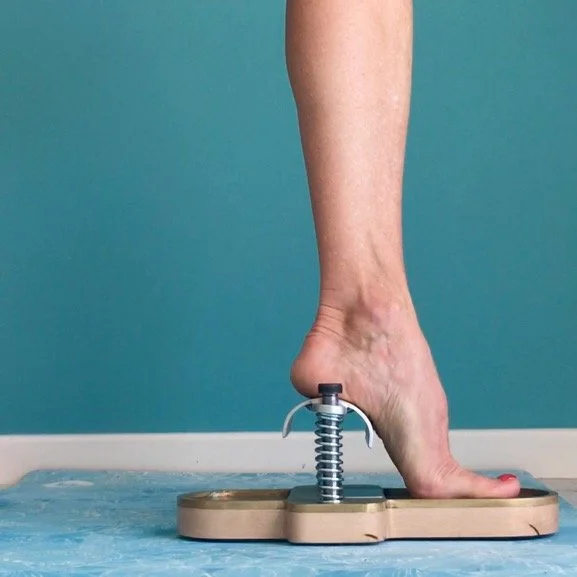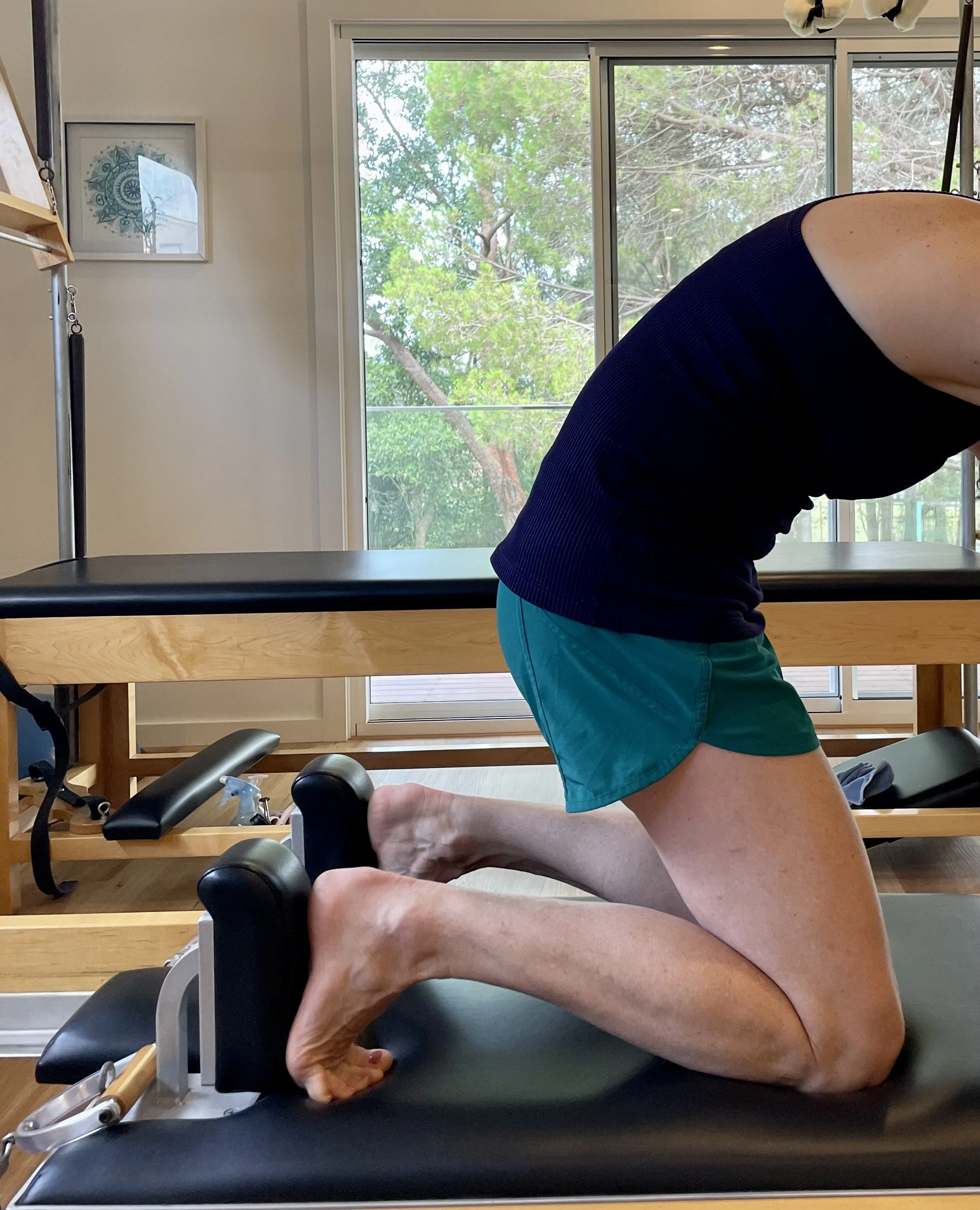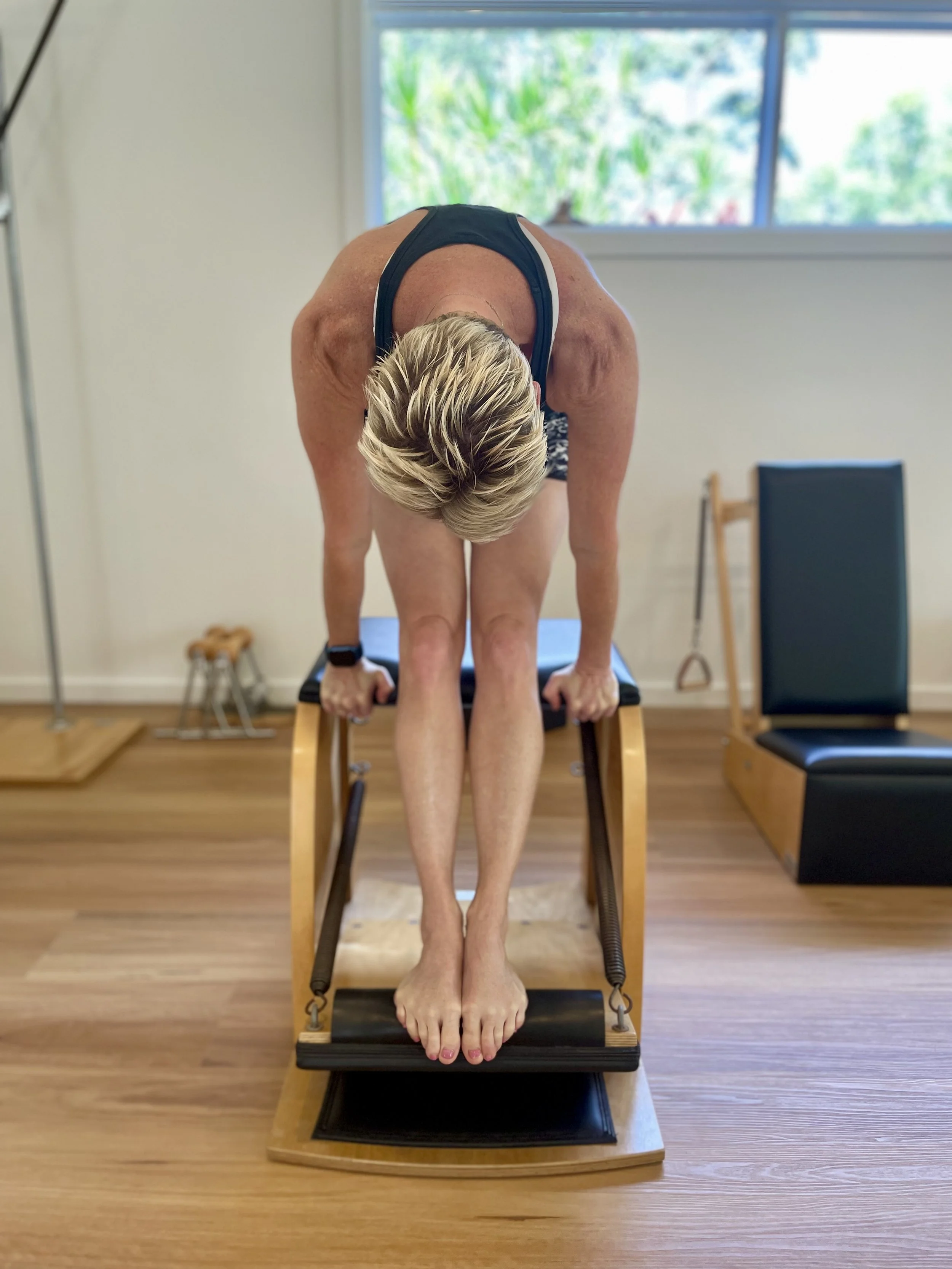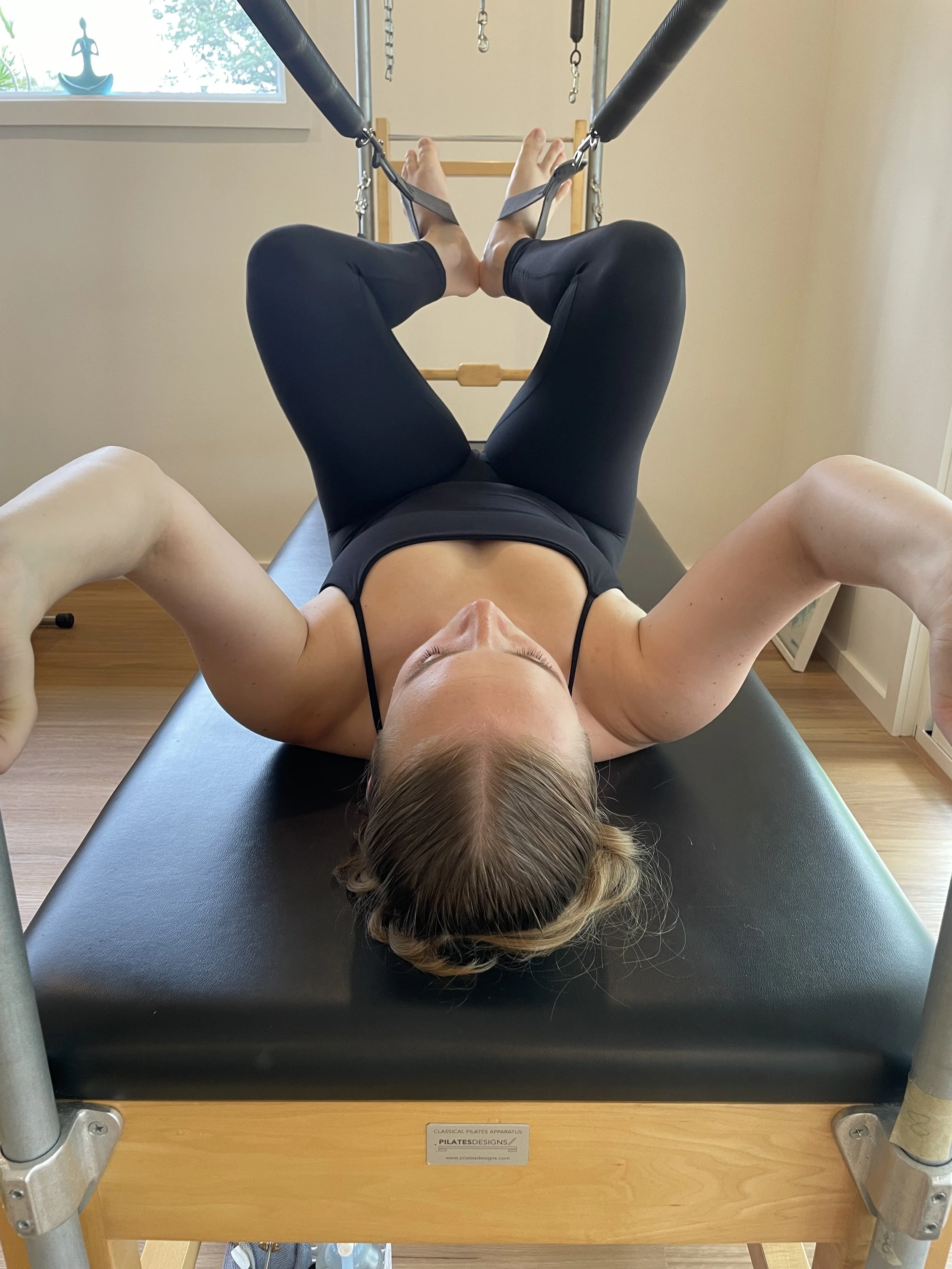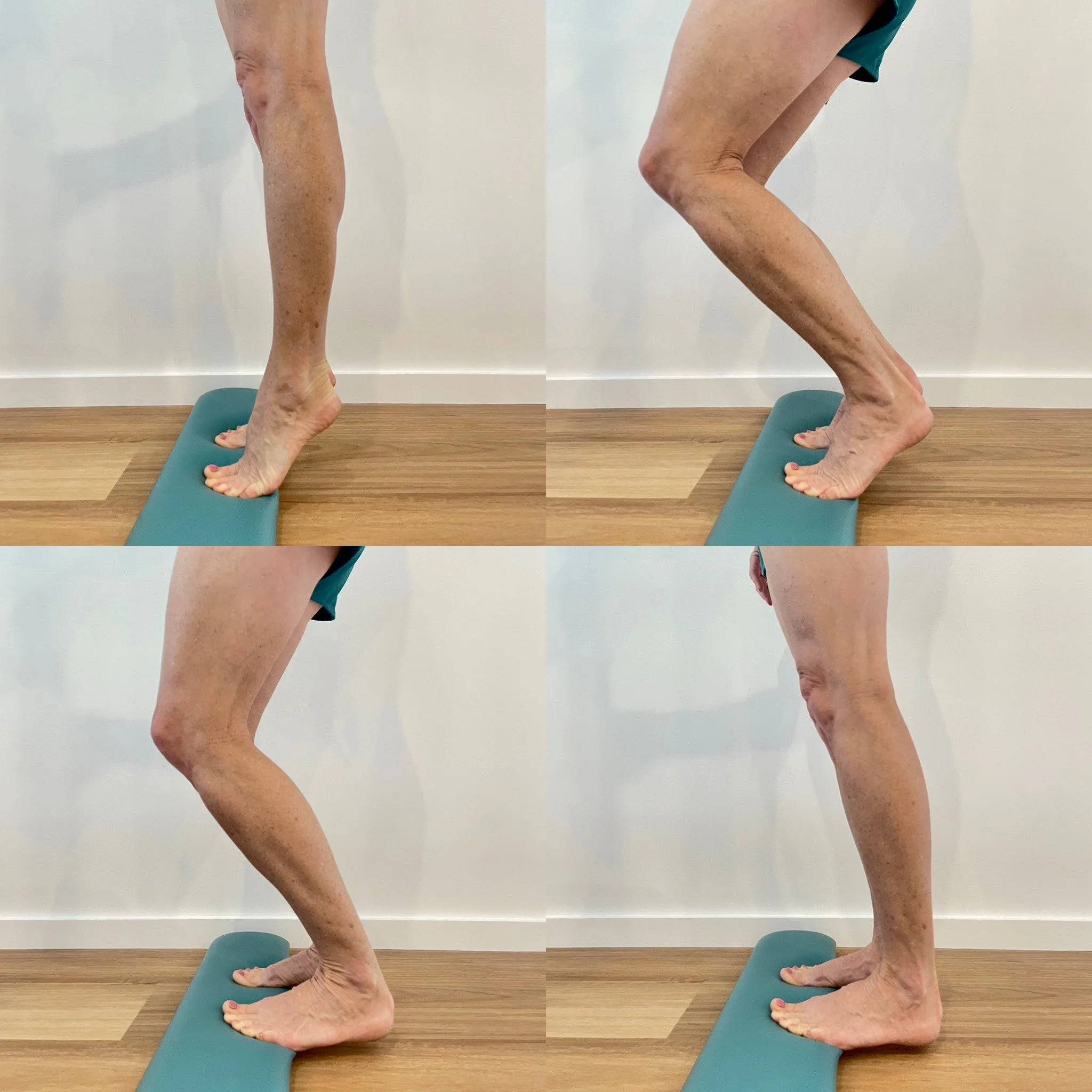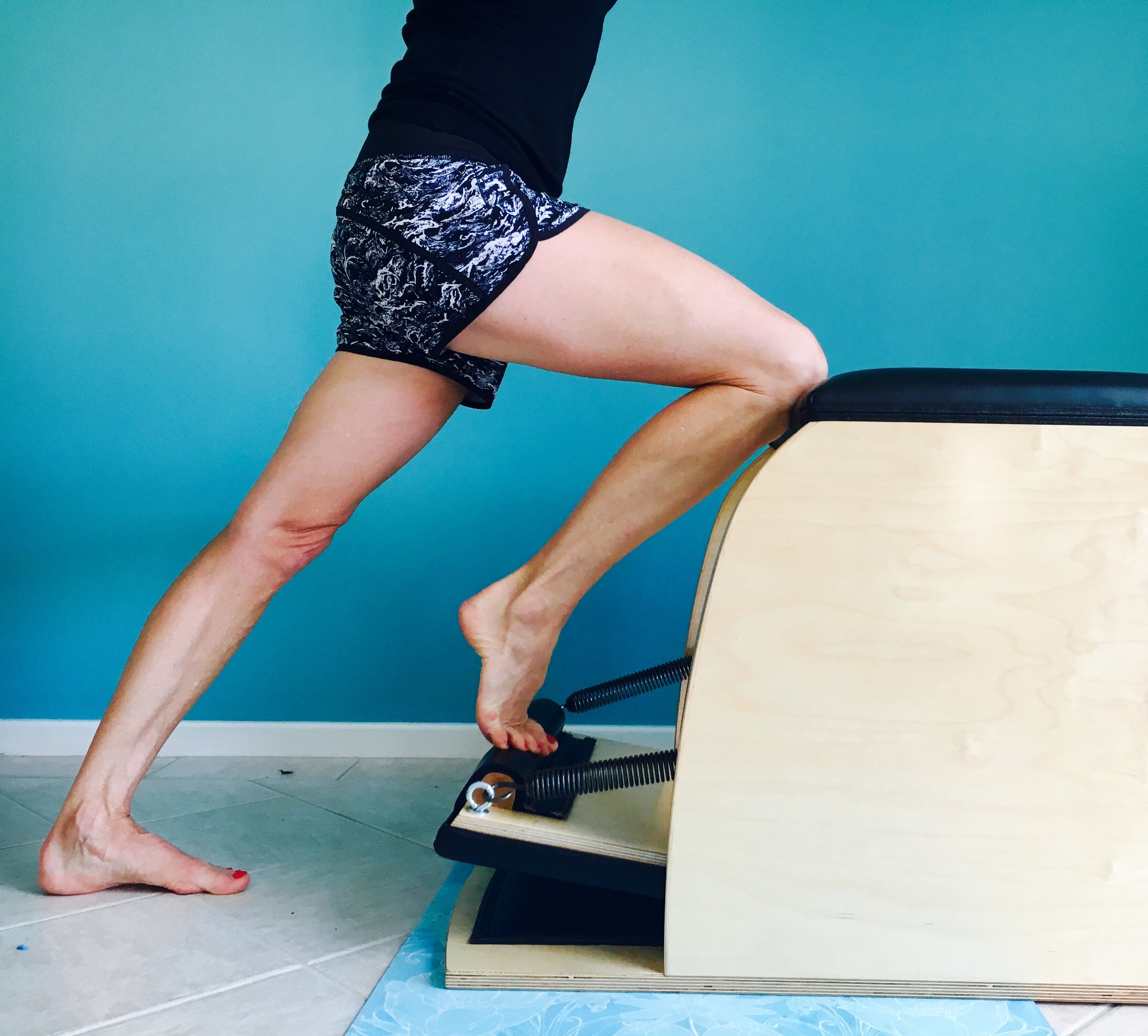Put your best foot forward
Our feet are the foundation of our body and play an important part in helping us maintain good posture and improve our overall well-being. When we look at what our feet do for us, they help us to stay upright and perform different activities such as walking, running, dancing and playing sports. They also send signals to the brain to help with our proprioceptive skills. The foot is responsible for balancing your bodies weight and helping us move with ease and grace from different positions, angles and surfaces.
UNDERSTANDING OUR FEET
If you are a Pilates teacher already you may be aware that our feet are made up of 26 bones, 33 joints and over 100 muscles, tendons, ligaments and nerve endings. With this complex mechanical structure, your feet should be agile and strong. When we consider this anatomy, it is extraordinary to me how much we neglect them by putting them in solid thick soled and narrow shoes or wear orthotics to give us ‘support'. We need to understand that our feet are a major sensory organ that sends messages to the brain, igniting and stimulating it to help us perform daily activities. This is best achieved barefoot or in minimal footwear.
When we are young, we run around barefoot or in minimal footwear allowing us to rebound and move with ease. Most people don’t even think about their feet until they become sore, achey and suddenly cause them grief. As we get older our lifestyles change due to work and we become more sedentary; we lose the awareness, flexibility and strength in our feet which decreases our proprioception. When our feet are weak, stiff and out of alignment our body compensates, effecting our posture, our balance and the way we move.
Long term, our poor foot mechanics and choice of footwear can directly impact and contribute to the risk of pain throughout the body (potentially causing knee, hip, lower back pain). When we look at the broad array of fitness programs now available, many focus on improving and strengthening one’s posture through ‘core work’ but often neglect to incorporate the feet as part of the core. There are a lot of intrinsic muscles in the soles and top of the feet as well as the extrinsic muscles originating from the lower leg and attaching to the foot. These muscles are a crucial part of you and your client’s fitness regime and need to be worked out just like every other part of the body. This is why Pilates is so beneficial to our client’s foot health and fitness.
FOOT FITNESS WITH PILATES
Joseph Pilates was a man way ahead of his time. When we look at Joseph’s work, it’s a system of integrating a full-body workout from head to toe. Joseph designed specific exercises on different Pilates apparatus to strengthen and mobilise the legs and feet (for example running, calf rises, leg and footwork), but his invention of the toe corrector, foot corrector, jumpboard and 2x4 bar are genius. These tools individually focus on our intrinsic foot muscles, giving them strength, mobility, alignment and awareness which improves our posture and balance.
We know that pilates is there to challenge you both physically and mentally; it is a full-body workout promoting all ranges of movement and awareness and the fact that we exercise barefoot already gives our feet a healthy start to increasing our well-being. Every piece of Pilates apparatus that our feet touch becomes the floor, challenging our feet to become aware and activated on different surfaces, widths, and shapes. The great thing about Pilates is even as a whole-body workout our feet are constantly activated and without them these full-body exercises are not executed to their full potential.
My first goal depending on the individual client, is to mobilise a client’s feet first, to make them become aware and feel the sensation of waking up their feet and how it changes and transfers up through their body. For mobility work I get them to roll out their feet with a hard ball or get them on the Makarlus (cups or spikes), this is a game changer for them doing the leg and footwork on the reformer.
In my view incorporating specific feet exercises throughout a Pilates session is valuable especially using the toe corrector and/or foot corrector, however if someone’s awareness of their feet is poor, I like to start with mobility and awareness exercises so this can translate this throughout their session while doing standing arm exercises or leg and footwork. Initially, their awareness and mobility exercise might take around 15 minutes and then becomes their homework as does foot strengthening exercises (with something like the toe corrector).
Let’s go through a few examples of whole-body exercises where I bring awareness to their feet:
Tendon stretch on the Wunda Chair or Reformer;
- Arches of the feet are actively pressing into the pedal or carriage, encouraging the heels to drop to promote ankle dorsi flexion increasing the tendon to stretch. Here we focus on foot, ankle and leg strength and stability.
Knee stretch on the Reformer;
- Enhances toe flexion and ankle plantar flexion against the shoulder blocks, strengthening and mobilising the foot. This increases our awareness of the foot during gait to propel us forward.
Feet in the straps;
- Tests our proprioception, control and skill to maintain our feet in good alignment whilst in narrow straps.
Arm series on the Pedi Pole;
- Your feet are cued to activate and be grounded into the earth, sending energy up the body and out through the crown of your head for the arms to move freely.
Swan on the Ladder Barrel;
- The feet are connected to the ladder to create stability and alignment so the spine can move with ease.
When you move your feet with intention, you are literally waking them up, increasing blood flow to the rest of your body and allowing them to do their job by communicating with the brain. There are 66 joints in our feet that each serve their own individual purpose. Get them moving!
FEET FOR THOUGHT
The structure of the human foot is complex yet so beautiful. A powerful yet agile foot allows a dancer to gracefully glide and leap across the stage whereas a tennis player is able to pivot smoothly with speed and confidence across the court. Regardless of one’s level of activity, everybody should be given the opportunity to move with grace, agility and confidence to function safely and efficiently.
Our feet are our bodies foundation that connects us to the earth. Pilates delivers a full body workout, so the next time you or your clients are doing an exercise check on their/your feet. Ask - what are they doing? Are they active? Are they alive?
We need to educate our clients about their feet and how important they are to keep mobile and strong. We are so lucky to teach and practice Pilates and it is a fabulous way for your clients to ignite their feet, keeping them strong yet supple.
Practice makes progress. As Leonardo Da Vinci said “The human foot is a masterpiece of engineering and a work of art.” Look after your feet, your body will thank you for it!
—————
Renae Blackmore an instructor since 1996 and runs Renae Blackmore Pilates studio in Wamberal, NSW Australia. She is a faculty educator for National Pilates Training and her studio is a host site for NPT. Contact NPT for more information.

